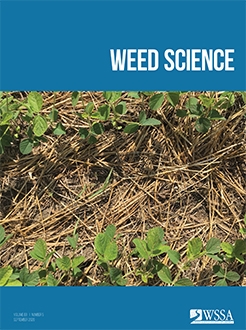Annual sedge (Cyperus compressus L.) populations with resistance to halosulfuron were identified in turfgrass at two new locations in Georgia. Research was conducted to evaluate (1) resistance levels to two acetolactate synthase (ALS) inhibitors, (2) ALS enzyme susceptibility, (3) genetic differences associated with resistance, and (4) differential levels of ALS gene expression in these biotypes. In dose–response experiments, the biotypes were >160 times resistant to halosulfuron but only 12 times more resistant to imazaquin compared with a susceptible biotype. In vitro enzyme assays indicated that resistant (R) biotypes required 6.1-fold greater concentrations of imazaquin to reduce ALS activity 50% compared with the susceptible (S) biotype. Both R biotypes had a similar Pro-197-Ser amino acid substitution in the ALS gene that confers resistance to sulfonylureas. Compared with the S biotype, R biotypes had 4.4 times higher ALS gene expression than the S biotype. No differences in gene copy number were found between any biotypes for the ALS gene. Overall, ALS-resistant C. compressus selected by halosulfuron use in turfgrass may be exhibiting partial susceptibility to imazaquin but complete resistance to sulfonylureas. Differential levels of susceptibility to ALS inhibitors for these biotypes are associated with the Pro-197-Ser substitution and enhanced expression of the ALS gene.
How to translate text using browser tools
26 August 2020
Gene Expression and Target-Site Mutations are Associated with Resistance to ALS Inhibitors in Annual Sedge (Cyperus compressus) Biotypes from Georgia
Jialin Yu,
Patrick E. McCullough,
J. Scott McElroy,
David Jespersen,
Donn G. Shilling
ACCESS THE FULL ARTICLE

Weed Science
Vol. 68 • No. 5
September 2020
Vol. 68 • No. 5
September 2020
herbicide
sulfonylureas
target-site resistance
turfgrass
weeds




